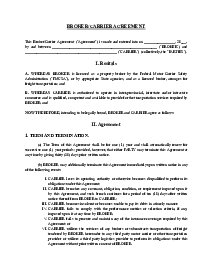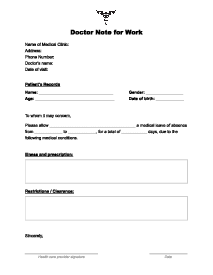-
Templates
1099 FormsAccurately report 1099 information returns and ensure IRS filing with easeExplore all templatesW-9 W-8 FormsEasily manage and share taxpayer details to streamline payments and meet IRS requirements with confidenceExplore all templatesOther Tax FormsFillable tax forms simplify and speed up your tax filing process and aid with recordkeeping.Explore all templatesReal EstateReal estate templates for all cases, from sale to rentals, save you a lot of time and effort.Explore all templatesLogisticsSimplify your trucking and logistics paperwork with our ready-to-use transportation and freight templates.Explore all templatesMedicalMedical forms help you keep patient documentation organized and secure.Explore all templatesBill of SaleBill of Sale templates streamline the transfer of ownership with clarity and protection.Explore all templatesContractsVarious contract templates ensure efficient and clear legal transactions.Explore all templatesEducationEducational forms and templates enhance the learning experience and student management.Explore all templates
-
Features
FeaturesAI-Enhanced Document Solutions for Contractor-Client Success and IRS ComplianceExplore all featuresAI Summarizer Check out the featureAI PDF summarizer makes your document workflow even faster. Ask AI to summarize PDF, assist you with tax forms, complete assignments, and more using just one tool.Sign PDF Check out the featurePDFLiner gives the opportunity to sign documents online, save them, send at once by email or print. Register now, upload your document and e-sign it onlineFill Out PDF Check out the featurePDFLiner provides different tools for filling in PDF forms. All you need is to register, upload the necessary document and start filling it out.Draw on a PDF Check out the featureDraw lines, circles, and other drawings on PDF using tools of PDFLiner online. Streamline your document editing process, speeding up your productivity
- Solutions
- Features
- Blog
- Support
- Pricing
Calculating the Cost of an Employee: Expenses Beyond Just Salary
.png)
Dmytro Serhiiev
Are you looking to manage resources effectively within your business? Then you should think about how much you’re going to pay your newly hired employees. But you should also be aware that an employee's true cost goes way beyond salary. Ignoring other aspects can lead to some highly undesired consequences. So, how to calculate the cost of an employee? What formulas to use and what exactly to take into consideration? That’s what this post is all about. Keep reading for answers.

Mandatory Employee Costs Beyond Base Pay
Let’s start with exploring the various mandatory employment costs that go beyond base pay:
1. Gross Annual Pay
It suggests all forms of compensation: base salary plus bonuses, commissions, and overtime. In a nutshell, it’s a full reflection of an employee's earnings. First, define the total annual compensation to deal with this aspect like a pro.
When working up a budget, remember that gross annual pay may alter because of performance-related rewards. Clearly explain the structure of yearly gross compensation to your employees. It will stimulate mutual trust and understanding.
2. Payroll Taxes
Another important aspect to take into account beyond base pay. These taxes comprise income tax and Social Security and Medicare contributions. To manage payroll taxes, accurately calculate and withhold specific payroll taxes for each worker. Be financially prepared for payroll taxes. Stay updated about changes in tax rules and rates.
Make the most of payroll software or outsource it to professionals to speed up your calculations and reporting. Keep records of tax payments and filings. It will make your business life easier, for sure.
3. Supplemental Benefits
These benefits are health insurance, retirement plans, and paid time off. To manage these costs, carefully analyze various benefit plans and choose the budget-friendly one for your business. Spend your budget wisely to cover supplemental benefits without weakening your financial stability. Stay updated on benefit-related laws to avoid legal problems. Last but not least, review benefit plans from time to time to evaluate their efficiency and adjust accordingly.
4. Expenses Like Company Retreats and Overhead
These costs are paramount for creating a positive work environment. To manage them, allocate funds for them in advance. When organizing company retreats, opt for enjoyable, cost-effective solutions within your budget. And don’t forget to review and manage overhead costs like office space, utilities, and equipment regularly. Balance is paramount when it comes to both creating a positive work environment and staying within your budget.
Factors That Impact Employee Cost
Some very important factors influence the actual cost of an employee. Explore them thoroughly before hiring new people.

1. Location: how it shapes employee expenses
Location is closely connected to the parameter of cost of living. For example, a mobile developer in San Francisco will earn a higher salary than their colleague in Buenos Aires. Why? It’s simple: because the cost of living is higher in San Francisco. That said, getting to grips with such location-based factors as cost of living, local tax rates, and even availability of talent is paramount when forming a well-rounded employee cost structure.
Labor legislation and cost of living vary depending on the jurisdiction. For instance, the legally mandated pension tax in Quebec in 2023 is 10.8%, which applies to salaries between $3,500 and $66,600. The same tax in other areas in Canada is 5.95%, with the same salary range. These nuances are worth delving into, aren’t they?
2. Company size: big or small matters
Yes, labor cost calculation is closely dependent on the size of a company. Naturally, larger companies offer higher salaries compared to their smaller counterparts. In this sense, larger companies reap benefits from paying their employees more. Employees with higher salaries tend to stay longer, which saves money on hiring and training.
On the other hand bigger companies are more likely to hire junior or intern employees for a smaller than a market salalrie, because of the experience they can provide.
3. Recruitment costs: finding top talent doesn’t have to be expensive
According to the Society for Human Resource Management, hiring someone in the US usually costs about $4,129. Hiring new employees comes down to such expenses as advertising, interviews, background checks, and onboarding. If you want to manage recruitment costs, go the extra mile to simplify your recruitment process, attract candidates organically, use software for speedy background checks, and focus on employee referrals to find top talent.
4. Market conditions: they fluctuate
With more choices at employers’ disposal, offering lower salaries to top talent becomes easier. But when the job market is on the candidates’ side, keeping a professional employee will require an increased cost of employing.
5. Industry: field of work affects employee costs
In high-demand industries, higher salaries for professionals are a must. Unpopular industries, in turn, can ‘afford’ to offer lower wages.
6. Fringe benefits: manage them wisely
According to a recent US Bureau of Labor Statistics report, benefits comprise about 30% of an employee’s total compensation. If you want to manage these costs as an employer, offer flexible benefits, educate your staff on the value of fringe benefits, and regularly analyze the effectiveness of the benefits your company provides.
7. Overhead costs
Irrespective of your business's industry, your employees will need equipment to do their job properly. Therefore, overhead is another vital factor to consider when calculating costs of an employee. Standard overhead costs usually include rent, utilities, and office supplies.
How to Calculate the True Cost of an Employee
No wonder they say that knowledge is power. Knowing the basics (and the nuances) of calculating labor cost grants you the freedom of effective budgeting and financial planning. To calculate employee cost, make the most of the formulas provided by our experts below — and benefit from the examples, too:

1. Gross salary formula
This formula is the simplest one on the employee cost scene. It comprises employees’ base salary and is a starting point for any labor cost calculation. Here’s how it works:
If the position is paid per hour (includes overtime and extra comensations):
Gross salary = Pay rate x working hours + Overtime rate x overtime hours + bonuses
If the position is paid per month (no overtimes included):
Gross salary = base salary + bonuses
Example: Hiring a mobile developer with a base salary of $85,000 per year. In this case, this amount equals their gross salary.
While gross salary comes down to just one part of the total compensation, its importance shouldn’t be underestimated. Getting to grips with this particular formula helps employers analyze the overall value of employment. It, in turn, becomes a solid foundation for considering such extra expenses as benefits, bonuses, and the like.
2. Net salary formula
What is the net salary? It’s an employee’s actual take-home post-deductions money. The amount reveals a refined, realistic view of what an individual earns minus taxes, benefits, and similar contributions. The formula looks as follows:
Net Salary = Gross Salary - Deductions
Example: The same mobile developer with a gross salary of $85,000. Without all the deductions, the developer’s yearly salary looks less impressive, e.g., $73,000.
With all that said, if you promise your employees to pay them $50,000 a year, it means you’ll pay them this amount in gross wages. Net pay is different because it’s the amount your employee will take home after subtracting all deductions. It is the amount they see in their bank account on payday.
3. Total employment cost formula
By making the most of this formula, you’ll calculate cost of an employee in total. It suggests calculating gross salary, benefits, payroll taxes, insurance, and other expenditures. The total employment cost formula looks like this:
Total Employment Cost = Gross Salary + Benefits + Payroll Taxes + Other Expenses
Example: You hired a professional project manager with a gross salary of $95,000. Under this formula, aside from this figure, you will have to consider additional expenses, such as approximately $10,000 for health insurance, $15,000 for taxes, $4,129 hiring expenses, $2,000 relocate expenses, $5,000 education benefits. As a result, the total amount you’ll have to deal with as an employer may ultimately mount to about $131,129 yearly. And the employee will take home around $75,000 a year depending on your state tax low and other deductions.
‘The more you learn, the more you earn.’ These words by Warren Buffet echo profoundly when it comes to calculating the actual cost of an employee. Getting the full picture of the cost of employment and understanding the formulas provided above helps you opt for the most reasonable course of action, invest wisely, and stay ahead of the competition. With these formulas and generally a deeper understanding of the financial implications of hiring employees, your business is guaranteed to thrive.
Strategies to Reduce Employee Costs
The lower your company’s labor cost, the lower its expenses. If you want to reduce employee costs without sacrificing the quality and productivity of your workforce, you’ll need to apply specific cost-saving measures. Find them below and use them for balance.

1. Performance-based rewards
- Performance Bonuses. Tie bonuses to specific, measurable achievements. It will stimulate your workers to do their best and, thus, contribute maximum effort to your company’s success.
- Commission Structures. This approach suggests paying salespeople based on how much they sell. The more they sell, the higher their salaries. As a result, you reduce employee costs while stimulating your company workers to sell more of your products or services.
- Merit-Based Raises. This approach suggests paying more money to people in your company whose performance truly excels. That way, you pay the same salary to average employees while rewarding the best ones. Fair and budget-friendly. And it does motivate your average employees to improve their ways, too.
2. Other cost-saving measures
- Remote Work. Let’s face it. The fewer offices you have, the less overhead expenses you have to deal with. For many businesses today, embracing remote work options greatly reduces employment costs and even boost employee satisfaction. Win-win for everyone!
- Flexible Work Hours. Introduce flexible schedules to balance your business’s operational needs and your staff’s work-life balance—an excellent solution for lowering overtime costs and enhancing morale.
- Outsourcing. Outsource non-core functions like client support or data entry to specialized firms or hire a freelancer. It will help you lower overhead and labor expenses.
- Cross-Training. Teach your employees to do more than one job in the company. That way, you’ll always have excellent backup players who can step in whenever needed. For example, if you train one of your office employees to handle warehouse tasks, you will save money and make your team more flexible.
In the words of management author and guru Peter Drucker, ‘Efficiency is doing things right; effectiveness is doing the right things.’ That said, reducing employee costs is not about cutting corners. It’s about optimizing resources. The strategies we’ve provided will help your business maintain a high-performing workforce without breaking the bank.
FAQ
What is the true cost of an employee?
The actual cost of an employee spreads far beyond their base salary. It includes expenses like benefits, taxes, training, and office space. With this knowledge and exploration of specific techniques, you are guaranteed to achieve effective budgeting.
What is the overhead cost of an employee?
The overhead employee cost comprises all the indirect expenses related to their employment. Examples include office space, equipment, administrative support, and the like. Naturally, aside from salaries, as an employer, you will need to face overhead expenses — unless you reap the benefits from our employee cost-lowering tips provided above.
How to calculate payroll taxes?
Start by determining the applicable tax rates for income tax, Social Security, and Medicare. After that, subtract tax deductions. Then, calculate each worker’s tax liability based on their salaries and withhold the resulting amount from their paycheck. Don’t forget to make timely payments to the government and keep all the records just in case.
Fill Smarter, Not Harder with PDFLiner
Optimize your document workflow with an efficient tool.



























































